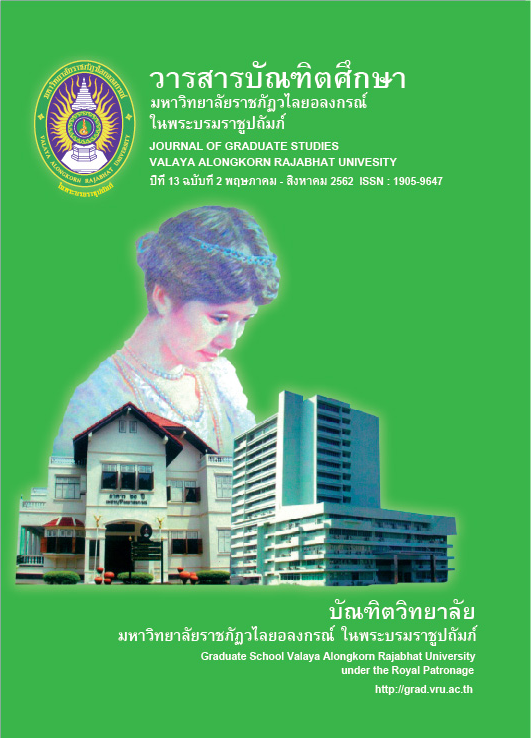CONCEPT AND FORM THE PERFORMING ARTS FOR THE OPENING CEREMONIES OF SPORT EVENTS
Main Article Content
Abstract
This study explored the concepts and form in performing arts for the opening ceremonies of sports events in sport international including Olympic Games
The findings reveal that the Olympic Games which have become a scheme for other secondary sport events. The study of the concept and form in performing arts for the opening ceremonies of sport events is divided into three phases: 1) The beginning phase whereby the cultural performances and the performances demonstrated simple sports practice and were integrated with arts and sport sciences; 2) The developing phase of which performing semiotics were implemented in the performances to add value to sports and to highlight cultural expressions leading to identity formation; and 3) The entertaining innovation phrase or the period of aesthetic expressions which add a variety in presentations by telling the story. Using technology and innovation to blend in with the diversity of the performing arts.
The performances in most opening ceremonies of sport events are one of interesting activities. They add value to the field of sports and the performances are considered a key diplomatic component with power and efficiency or Solf Power in communication of ideology. Moreover, they are seen as an honor of the events and their hosts.
Article Details

This work is licensed under a Creative Commons Attribution-NonCommercial-NoDerivatives 4.0 International License.
บทความทุกเรื่องได้รับการตรวจความถูกต้องทางวิชาการโดยผู้ทรงคุณวุฒิ ทรรศนะและข้อคิดเห็นในบทความ Journal of Global of Perspectives in Humanities and Social Sciences (J-GPHSS) มิใช่เป็นทรรศนะและความคิดของผู้จัดทำจึงมิใช่ความรับผิดชอบของบัณฑิตวิทยาลัย มหาวิทยาลัยราชภัฏวไลยอลงกรณ์ ในพระบรมราชูปถัมภ์ กองบรรณาธิการไม่สงวนสิทธิ์การคัดลอก แต่ให้อ้างอิงแหล่งที่มา
References
Carrard, F. (1996). The Olympic Message in Ceremonies, The Vision of the IOC. In MacAloon, J., & Moragas Spà, M. d. (Eds.). Olympic ceremonies: historical continuity and cultural exchange: International Symposium on Olympic Ceremonies, Barcelona-Lausanne, Novembre, 1995.
Chullasapya, D, Air Chef Marshal. (1988). Kīlāʻōlimpik Kīlāsānʻōlimpik [Olympic Games]. Executive Journal, 7, 2, 17.
IOC. (2008). Opening Ceremony-Beijing 2008 Summer Olympic Games. Retrieved, August 11, 2018, from https://www.youtube.com/watch?v=JsDY1Ha83M8
IOC. (2018). STOCKHOLM 1912. Retrieved, August 11, 2018, from https://www.olympic.org/stockholm-1912
Kelly Faircloth. (2016). Hey, FYI, the 1984 Olympics Opening Ceremony Featured a Dude Flying Around on a Jet Pack. Retrieved, August 11, 2018, from https://pictorial.jezebel.com/hey-fyi-the-1984-olympics-opening-ceremony-featured-a-1784843488.
Lattipongpun, W. (2010). “The Origins of the Olympic Games' Opening and losing Ceremonies,” Intercultural Communication Studies XIX: 1 010.Retrieved from ttps://www.researchgate.net/publication/251572997The_Origins_of_the_Olympic_Games27_Opening_and_Closing_Ceremonies
Moragas Spa, M. d., Rivenburgh, N. K., & Larson, J. F. (1995). Television in the Olympics. London: John Libbey & Company Ltd.
Müller, N. (1996). From Athens (1896) to Amsterdam (1928). Definition of Ceremonies Protocol in accordance with Pierre de Coubertin's Ideal. In MacAloon, J., & Moragas Spà, M. d. (Eds.). Olympic ceremonies: historical continuity and cultural exchange: International Symposium on Olympic Ceremonies, Barcelona-Lausanne, Novembre, 1995
Stephanie Limiti. (2016). 7 Of the Coolest Cities That Have Hosted the Olympics. Retrieved, August 11, 2018, from https://classpass.com/blog/2016/08/03/cities-that-have-hosted-the-olypmics/
Swaddling, J. (2004). The ancient Olympic Games. London: The British Museum Press, c2004.
Yahoo. (2012). JO: la cérémonie d'ouverture en images. Retrieved, August 11, 2018, from https://fr.sports.yahoo.com/photos/jo-la-c%C3%A9r%C3%A9monie-d-ouverture-en-images-slideshow/poppins-photo-1343426601.html


